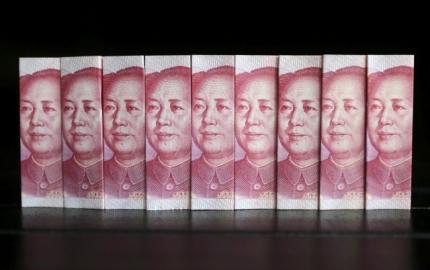Asian Currencies to Hold Ground Against Dollar Through Year
Bareksa • 03 Jul 2014

File photo of picture illustration of Chinese 100 yuan banknotes in Beijing (REUTERS/Jason Lee)
It was trading around 6.21 on Thursday and has gained 0.7 percent in June, the largest monthly gain in over a year.
Bareksa.com - Asian currencies will probably hold their ground until the end of the year and then weaken in early 2015 when a long-awaited U.S. dollar rally is expected to kick in, a Reuters poll of foreign exchange strategists showed.
The U.S. Federal Reserve is on track to end its stimulus programme by October and expectations are rife that it will start to raise interest rates from record lows next year, probably in the second half, which should prop up the dollar.
The Reuters poll of around 60 foreign exchange analysts taken this week predicts the Chinese yuan, the Indonesian rupiah and the Taiwan dollar will appreciate slightly until December.
The Indian rupee, the South Korean won and Malaysian ringgit, on the other hand, will likely just hover around current levels in the second half of the year.
Those findings are in line with a similar Reuters poll for major currencies which showed the euro and sterling weakening against the dollar in a year.
"There will be some generalised dollar strength late this year and early next year due to increasing expectations of interest rate hikes in the U.S.," said Vishnu Varathan, senior economist at Mizuho Bank in Singapore.
However, he added that moves in many Asian currencies will be nuanced and dependant much more on domestic factors in each country.
The yuan is predicted to trade at 6.10 a dollar by December and 6.08 by this time next year amid expectations the People's Bank of China will allow the currency to appreciate gradually again, after guiding it sharply lower earlier this year to deter speculators.
It was trading around 6.21 on Thursday and has gained 0.7 percent in June, the largest monthly gain in over a year.
The central bank is also expected to ease policy to boost liquidity and encourage more lending in an economy that has lost some momentum in recent years.
"In contrast to 2012, this time the appreciation will be a lot more gradual and there may be some dips where the PBoC allows the yuan to weaken to inject two-way volatility," Varathan said.
The Indian rupee is expected to trade at 59.94 a dollar in three months, 60.00 by December and 60.24 in a year, not much different from Wednesday's closing rate of 59.69.
It fell nearly 2 percent in June due to higher oil prices, which are expected to stretch the country's import bill.
"The Iraq crisis (insurgents capturing key cities) has an impact on India as oil from there accounts for 17 percent of the country's total fuel imports," wrote Sook Mei Leong, currency strategist at BTMU in Singapore.
Analysts, however, expect the new government led by Prime Minister Narendra Modi to usher in economic reforms to woo investors as well as repair the country's finances in order to boost growth.
Indeed, the most bearish forecast for the rupee is for it to dip to 64.00 in a year, much stronger than the 68.80 level it plunged to in August last year.
Indian stock markets have rallied on reform hopes, too, scaling record highs, on foreign inflows of $20.9 billion so far this year.
The poll also showed the Indonesian rupiah will strengthen to 11,900 a dollar in a month, 11,748 in three months before dipping to 11,917 in a year against Wednesday's 11,905.
It fell over 6 percent between April to June on concerns of a widening current account deficit but analysts expect it to rebound on hopes the presidential elections this month will reduce political uncertainty in the country. (Source : Reuters)